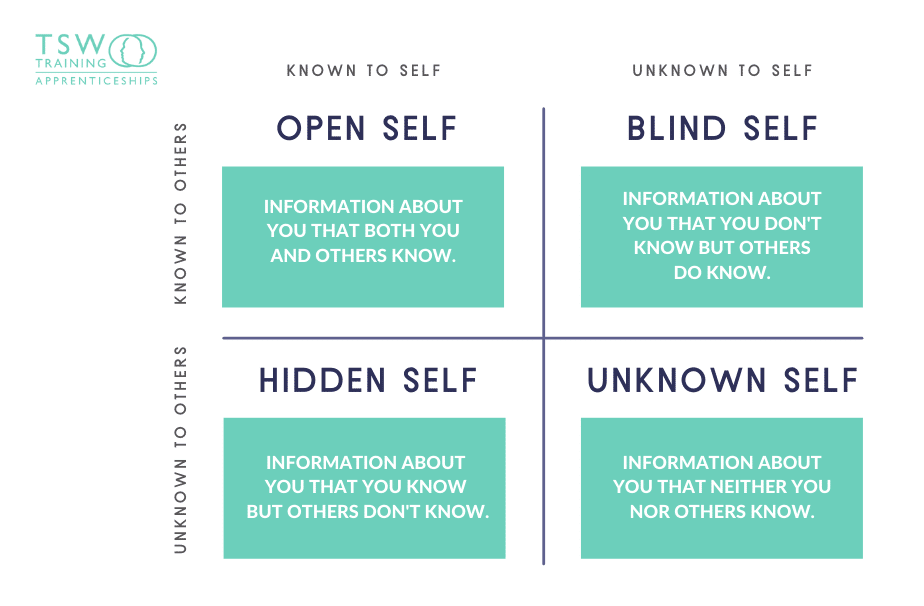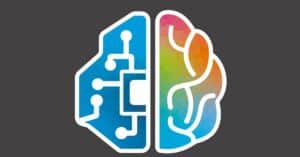The Johari Window is a handy technique that managers and team leaders can use to help improve communication, self-awareness and productivity at work.
The name “Johari” is derived from a combination of the names Joseph Luft and Harry Ingham, two psychologists who worked together to create the model in 1955.
Here we look at what it is, and how it can be applied to improve your team’s performance.
⏰Key points:
- Participants choose a set of adjectives they feel best describe themselves, and the rest of the group do likewise. Then, the results are compared and grouped into one of four sections, or ‘panes’.
- Through a process of disclosure and feedback, openness and understanding are encouraged. This in turn will improve communication, team development and group dynamics and equality. It also helps limit conflict, confusion, and misunderstanding.
- While this can be a useful exercise, it’s best to apply it with sensitivity, and avoid judgment and negativity.
What is the Johari Window?

The 4 panes of the Johari Window: Open Self, Blind Self, Hidden Self & Unknown Self
The Johari Window is a model used to help people better understand their relationships both with themselves, and with others. As such, it’s a useful technique for improving an individual’s self-awareness and development in group situations. It also aids two-way communication with the group.
The exercise takes the form of disclosure from the participant, and feedback from the group. A list of adjectives is drawn up, describing attributes which may or may not apply to the participant (eg ‘adaptable’, ‘independent’, ‘helpful’ etc). This information can relate to the person’s attitudes, skills, behaviours, emotions and so on.
The participant discloses which characteristics they think apply to them, and the group provides feedback on which adjectives they believe apply. These are then grouped into the four ‘panes’ of the Johari Window, which we’ll examine below.
In corporate settings, the Johari Window is used as a heuristic (hands-on) exercise. In other words, it’s not really intended to be an exact science, but rather a rule of thumb. In applying it to the workforce, it’s intended as a tool to help get the best out of your team – not to psychoanalyse them.
A very brief history of the Johari Window
The model was developed in 1955 by American psychologists Joseph Luft and Harry Ingham. The theory came about through observation of group dynamics in the University of California. Joseph Luft continued to develop and improve the model over time.
The word ‘Johari’ is a combination of the psychologists’ first names, and the ‘window’ refers to the four ‘panes’ used to visualise the exercise.
What are the four panes of the Johari Window?
The four ‘panes’ of the window are referred to variously as sections or quadrants, and have also been likened to rooms in a building.
Characteristics can be attributed to each section based on their visibility to the participant and/or members of the group.
Pane 1: Open area / arena
The first section is to be filled with attributes recognised by both the person and their peers. For example, if somebody views themself as diligent, and the group has also identified this characteristic, it occupies the open area.
This is the area in which communications are most likely to hit their mark, and the aim is to grow this area with disclosure and feedback. In essence, the more the group understands the participant – and the better they understand themselves – the more effective working together becomes.
Pane 2: Blind spot
This is the area populated by characteristics identified by the group, but not the participant. These are qualities that the person may be unaware of. As such, they might find the group interprets them differently from how they expect. Maybe they sometimes talk over people without realising, or underrate certain abilities. It’s worth noting that it’s best to approach the exercise with positive intentions – you’re not trying to produce a list of bugbears.
The aim is that, through increased self-awareness and understanding, the blind spot can be minimised.
Pane 3: Hidden area / façade
This is the area in which personal characteristics are known to the person, but not to the group as a whole. This area is likely to be larger with new starters, for instance, who haven’t become well-known among the group yet. With disclosure, this area can be shrunk, and the group will be able to communicate more effectively with the participant, and understand their motivations.
It may also be an area containing some characteristics which the participant wants to keep guarded. As such, it’s important to realise the person may not wish to reveal everything about themselves, and it should be handled with sensitivity.
Pane 4: Unknown area
This is the section populated by characteristics that neither the group recognise in the participant, nor the participant recognises in themselves.
This section can be used by the participant for self-improvement: eg identifying skills they may not recognise that they have. But for the purposes of the group exercise, this section is essentially ‘other’ – ie the area the group doesn’t focus on.
How can the Johari Window improve communication and productivity at work?
At its heart, the Johari Window is about getting everybody on the same page. Ultimately, the aim in a group situation should be to expand the top-left pane or ‘open area’. This is the most productive and effective area in which to be working.
This is the arena in which the participant’s attributes are visible and understood by both themselves and their peers alike. As such, communication and cooperation are optimal in this area; whereas conflict, confusion and misunderstanding are minimised.
When would the Johari Window be used?
This model can have a number of timely applications in the workplace. For instance, it might be a good exercise for a one-to-one, or annual appraisal. This can help the participant understand why they’ve received the feedback they have.
Another potential application is introducing a new member to an otherwise well-established team. In addition to being a ‘get to know you’, this can help the group understand how best to work with the new member. Again, this reduces the likelihood of conflict and misunderstanding.
It’s worth exercising judgment here. These exercises can be fruitful for many situations, such as introducing a new manager or team leader. However, they may not be the best exercises if the participant is a new, junior member of staff, or lacking in confidence.
What are the advantages and disadvantages of using the Johari Window?
Advantages
As mentioned, there are numerous positive benefits that this technique can have for both the individual and the team.
The individual may undergo an improvement in self-awareness, and it may aid personal development. It can help with communication and understanding, and overall inclusion and equality within the team. Likewise, it may also boost interpersonal relationships.
In turn, in better understanding the individual, the team can work with them more effectively, and help to get the best out of them. This can aid the group dynamic, further team development, and also help to improve inter-group relationships.
Disadvantages
A note of caution here. There are some potential drawbacks to using this model. One is that some feedback could be perceived as negative by the participant. It’s important to be sensitive to the participant, and not to be judgmental when applying attributes.
In addition, there may be characteristics which the participant simply doesn’t want people to know, or fears may be spread outside the group. It’s important not to push the participant beyond a level of disclosure that they’re comfortable with.







